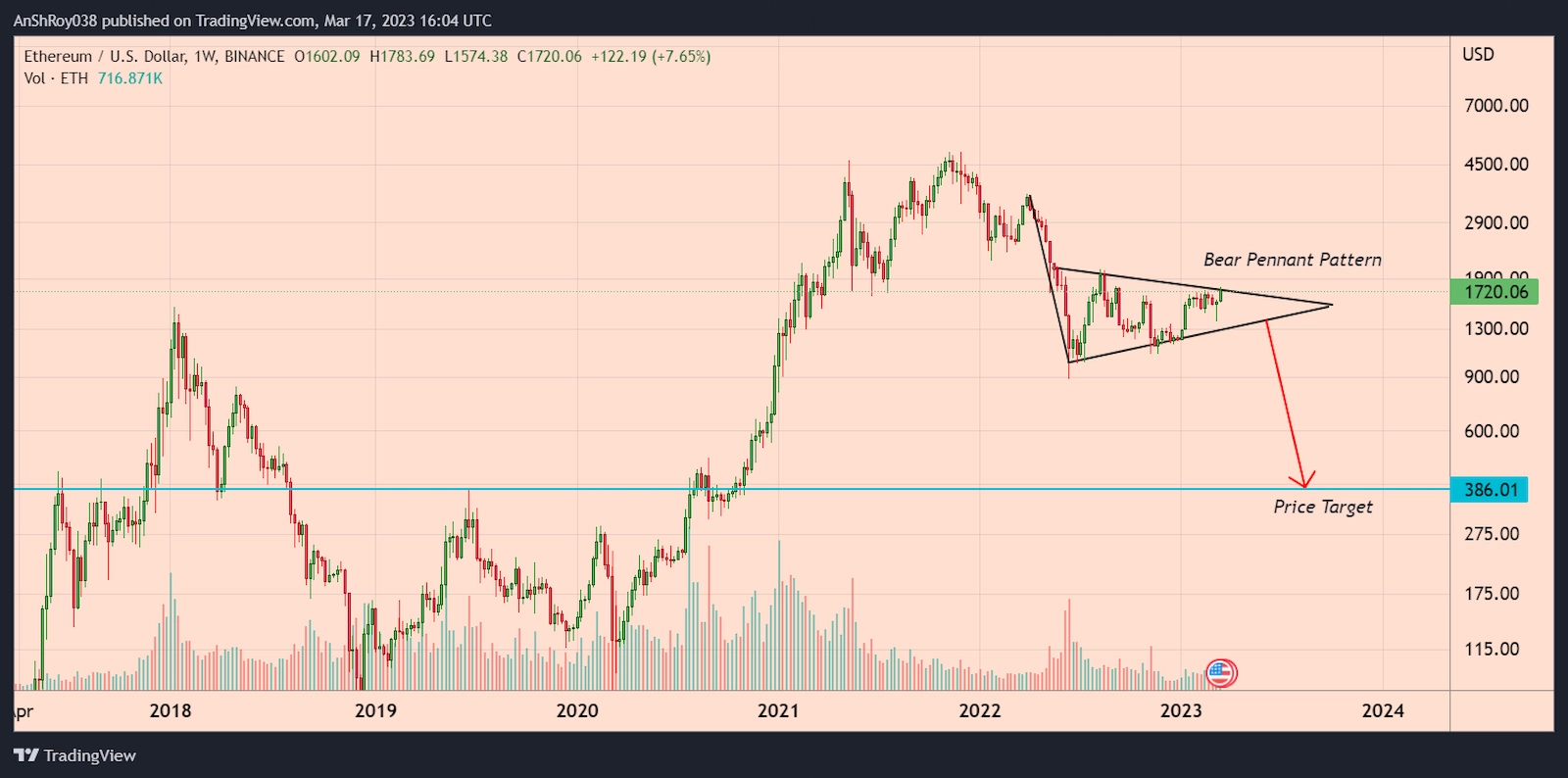NEW DELHI (CoinChapter.com) — Ethereum has announced the release date for the much anticipated Shanghai hard fork. The latest update would introduce EIP-4895, allowing Ethereum validators to withdraw ETH they staked since Dec 2020.
The Shanghai hardfork would also introduce several other EIPs, generally aimed at reducing the gas costs for Ethereum developers. The developers set the target date of Apr 12 for the Shanghai hard fork during the All Core Developers Execution Layer Meeting 156 call on Mar 16.
Validators have over 17.6 million ETH (worth $30.22 billion at the current rate). Theoretically, the latest EIP would allow validators to recover their staked tokens. However, it is likely validators would continue to stake their ETH due to high staking yields on the platform.
Validators who wish to withdraw their staked ETH might have to face a considerable waiting time since there is a single queue for both full and partial withdrawals. The Shanghai hard fork would allow withdrawal slots, lasting 12 seconds, only 16 partial withdrawals can occur.
Ethereum developers have successfully simulated the staked ETH withdrawal functionality on the Zhejiang testnet.
Also Read: Pi token price could crash 60% despite Pi Network Open Mainnet launch
Other developments in the Shanghai hard fork include EIP-3651. The EIP would lower gas costs related to Maximal Extractable Value payments when accessing the COINBASE address. (Not the crypto exchange, COINBASE software that allows developers to receive new tokens).
The Shanghai hard fork would also include EIP-3855, EIP-3860, and EIP-6049, all concerned with reducing gas costs.
The latest upgrade, also called Shapella, would complete the transition of the Ethereum network to a Proof-of-Stake (PoS) network. Initially, the developers had planned for a Mar release.
ETH Faces Risks From A Bearish Pattern
Meanwhile, ETH price has formed a bearish pattern called the Bear Pennant.
In detail, pennants are continuation patterns. They form when a period of consolidation with converging trendlines follows a large movement in cryptocurrency prices. Then, the asset breaks out in the same direction as the large initial movement.

Volumes play an important role in verifying the pattern. Per the rules of technical analysis, consolidation should occur with lower volumes, while higher volumes should accompany breakouts.
Related: What is Ethereum Shanghai Upgrade and How Does It Affect ETH Traders
However, to confirm the pattern, Ether volumes need to move up. Otherwise, the prime altcoin would continue to consolidate below $1,700. For a bear pennant pattern, traders calculate the price target by applying the initial flagpole’s height to the point where the price breaks out from the pennant.
Hence, Ether prices could fall to $386, nearly 78% of current prices.
Ethereum Price Spikes After Announcement, But Bears Pare Gains
Ether price spiked 6% to form a daily high near $1,767.2 on Mar 17, but bears started selling to book profits. ETH price rallied upward between Mar 11 and Mar 14, but the rally soon fizzled out and the token started crabbing.
ETH price has a strong dynamic support from its 20-day EMA (red wave) and 50-day EMA (purple wave) near $1,600. However, failure of the immediate support level could push the Ether price to test support from the token’s 100-day EMA (blue wave) near $1,500 before recovering.

On the other hand, an ETH uptrend could face resistance near $1,790. A break and hold above immediate resistance could help the Ethereum token price rise to $1,960 before downside corrections pare gains.
Meanwhile, the relative strength index for ETH remains neutral, clocking at 61.32 on the daily chart.
The post Ethereum Sets Date For Shanghai Hard Fork, ETH Spikes But Remains Inside A Bearish Pattern appeared first on CoinChapter.







